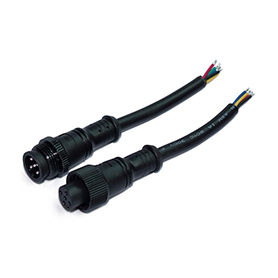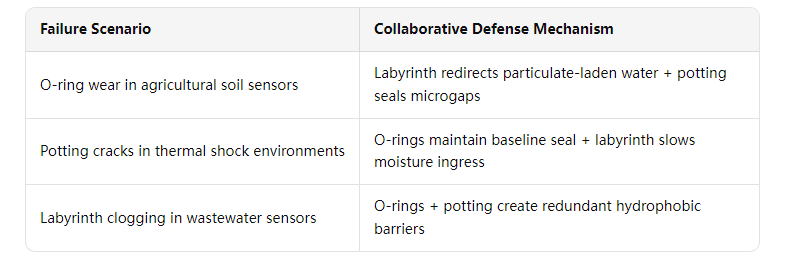News


News

IP68 Waterproof Connectors for Sensors: How to Achieve 10-Year Maintenance-Free Operation Through Structural Design
Release time:2025-03-10
viewed:431
In industrial automation, marine exploration, and new energy systems, waterproof connectors for sensors must evolve from "short-term protection" to "10-year maintenance-free" reliability. Traditional solutions like single-layer seals or basic potting often fail within 3-5 years under dynamic pressure, chemical corrosion, or thermal cycling. The key to achieving decade-long durability lies in thesynergy of O-rings, labyrinth seals, and precision potting – a design philosophy tailored specifically for sensor applications.

O-rings in waterproof connectors for sensors face unique challenges: micro-vibrations from IoT devices, frequent mating cycles in modular sensor arrays, and exposure to aggressive media like offshore brine or industrial solvents.
FKM (Fluorocarbon Rubber): Ideal for chemical sensors exposed to pH 1-14 fluids.
VMQ (Silicone Rubber): Perfect for temperature sensors in -50°C to 200°C ranges.
HNBR (Hydrogenated Nitrile): The choice for oil-immersed sensors in automotive/industrial systems.
Critical Range: 15-25% compression (ISO 3601) balances sealing force and longevity.
Sensor-Specific Data: In subsea pressure sensors, FKM O-rings at 25% compression showed <0.005ml/min leakage after 15,000 deep-sea pressure cycles.
Labyrinth structures in waterproof connectors for sensors combat two major threats:
Pulsed Water Jets (e.g., automated cleaning in food processing sensor nodes).
Thermal Expansion in solar-powered outdoor sensors (-30°C to 85°C daily swings).
Reverse Thread Labyrinth: For rotating sensor interfaces like wind turbine pitch control systems.
4-Stage Pressure Gradient: Used in oceanographic sensors to handle 10MPa hydrostatic pressure.
Electronics Protection: Prevents dendritic growth in high-humidity MEMS sensors.
Vibration Damping: Reduces resonance damage to piezoelectric sensor elements by 60% (per MIL-STD-810G).

Failure Scenario
Collaborative Defense Mechanism

Smart Farming Moisture Sensors:
8-year field test with HNBR O-rings + 3-stage labyrinth: 0% moisture ingress.
Battery Management Sensors (EV):
IP69K-rated PU-potting survived 100+ high-pressure car washes with <0.1% resistance drift.
True maintenance-free IP68 waterproof connectors for sensors are not about stacking sealing layers but achieving material compatibility, structural synergy, and process precision to intercept failure modes progressively. When O-rings, labyrinth seals, and potting work in harmony, the system gains "self-healing" robustness.Need sensor waterproof connectors?